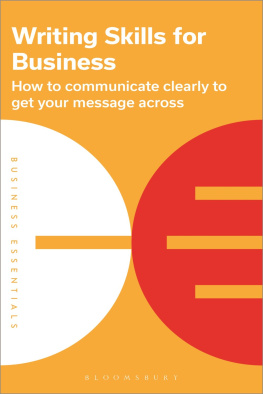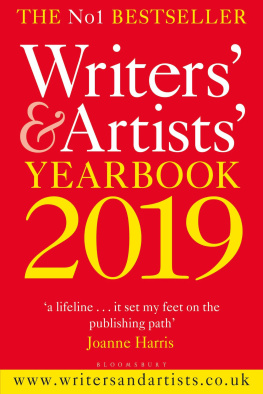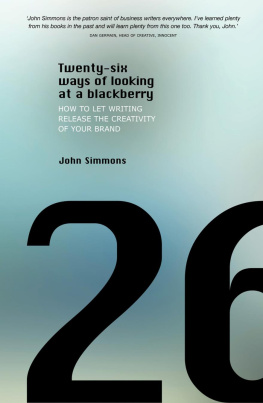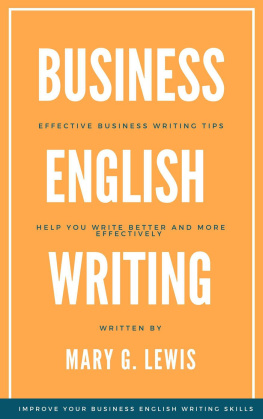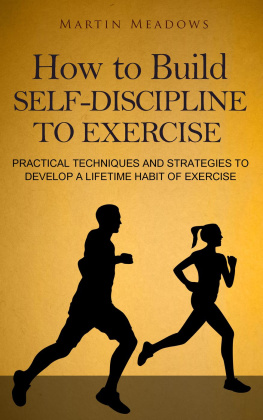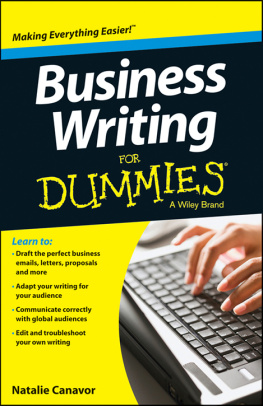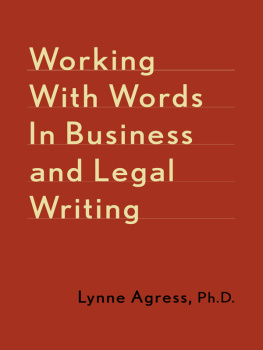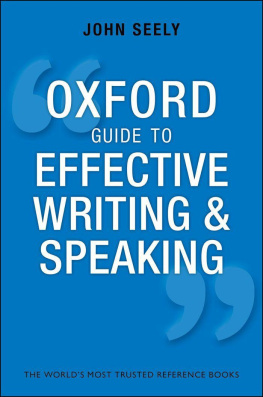


Alysoun Owen is the author of the Writers & Artists Guide to Getting Published and contributed to The Right Word: A Writers Toolkit of Grammar, Vocabulary and Literary Terms .
She runs a publishing consultancy and creates pitches, writes reports, and communicates with companies and individuals across various sectors and countries. She has been a commissioning editor for writing and language titles at Oxford University Press. Alysoun teaches a course on Project Management for the Publishing Training Centre, which covers communication skills and how to prepare information and documentation in a business context.
www.alysounowen.com
Contents
Assessment 1
Write down all the types of written texts you prepare in your job. Include all of them, from the formal to the more informal; those you write for internal eyes only and those that are published to the outside world.
There will be more than you think. Concentrate on those that include continuous prose.
Types of written text might include (and this list is by no means comprehensive):
company report;
business or strategy plan;
contract;
blog;
marketing or project plan;
newsletter;
public notice or poster;
job application cover letter/email;
briefing document;
user or training guide.
Assessment 2
Now think about the ways in which you communicate in writing. How do you reach those with whom you are communicating? Tick all those that apply.
letter
email
social media
professional publication
instant messaging
online
group chat
PowerPoint presentation
Add any others.
Assessment 3
3.1. How do you feel when you sit down to draft an email to your boss or a peer?
a. Confident, I dont think too much about it, I simply get on and do it.
b. Sometimes I worry about the wording and find it tricky to find the right tone to use.
c. I always feel anxious when contacting my superiors and colleagues, as I worry about mistakes in my writing. It takes me longer than I think it should to draft an email.
3.2. What if you are asked to write something longer a strategy paper for senior managers or for board members? How do you rate how you feel then?
a. mostly confident
b. sometimes worried
c. always anxious
Assessment 4
How good is your grasp of grammar and punctuation?
1. Do you know the difference in meaning between these words and in which context to use them?
a. climactic and climatic
b. affect and effect
c. fewer and less
2. Do you know how to use a colon and a semi-colon, and how to distinguish one from the other? (Answers are given in .)
Assessment 5
Which areas are you weak in when it comes to writing? Tick all those that apply.
knowing how to start
vocabulary and spelling
grammar and punctuation
structuring a document
content flow and readability
using the appropriate tone
avoiding errors
checking my work
taking too long
rushing not spending enough time
Getting going
No one is asking you to become a literary sensation. The text you are writing is likely to be factual and practical. You shouldnt spend hours deliberating over every word and sentence. That would not make good business sense.
Having a clear sense of the PURPOSE of what you are drafting is the first crucial step in becoming a better business writer.
Why being good at writing matters
Communicating effectively on the page or screen is different from giving a presentation, contributing verbally to a team meeting, introducing yourself in person to a client or briefing a colleague face-to-face. In all these situations, it is highly likely that your spoken communication will be accompanied by some written materials. These might include items such as:
a meeting agenda;
minutes and actions produced after a meeting;
an email to confirm what was agreed between two or more parties to record or clarify business discussions;
a legal document to formally ratify business decisions;
an email to thank, encourage or inform a client or colleague;
a PowerPoint presentation to support a talk or lecture.
Getting your message across
In the world of work, getting your message across to the right people in the most effective way may be the difference between winning or missing out on a contract. It is a core aspect of doing business and should therefore be a priority for all organizations. The way you personally communicate, as a representative of your company or institution, is important. It will impact on how your company is perceived.
Good communication skills are beneficial because they can:
enhance a reputation or brand;
instil confidence;
engage an audience;
make you look professional and up to date.
Poor communication will impact you and your organization in negative ways. It might be poor for various reasons. These include:
sloppy text riddled with grammatical and spelling mistakes;
badly formatted or structured documents;
text that is unclear, too wordy, and not focused;
content that is dull and does not engage its audience;
documents that have not been planned or thought through in enough detail;
documents that are sent to recipients without being checked for factual errors.
The chapters in this book show how you can avoid being a poor communicator.
Companies that take written communication seriously may do some of the following:
provide staff with training in writing skills;
offer samples of good written documents;
provide company-wide style guides and templates that staff should adhere to;
adapt their styles, formats and means of communication depending on market changes;
welcome feedback from staff on new ways of communicating, based on market response and data evidence.
TOP TIP
Clear and focused writing is not an end in itself. Communicating well, so that you get your intended message across to colleagues, clients or customers is an essential aspect of performing well in the business world.
You want your message to be as easy as possible for your readers to understand.
You dont need to be a wordsmith or literature graduate to write well. However, you do need to practise. Flexing your writing muscles can be hard but ultimately rewarding. You will get to a stage at which you worry less about including the right word in your prose and have a fluency that allows you to adapt your style and approach to suit different contexts.
How you put your point of view across to engage, inform, persuade or sell to others matters. Writing clear, error-free content that is right for the purpose for which it is intended is something individuals and teams can learn to do.
This book is full of quick tips and nuggets of advice about how to communicate better in your business writing. It will guide you as you consider:
the best way to communicate;
the most effective format to use;
the most appropriate tone to adopt;
what style errors and other pitfalls to avoid.
Next page
